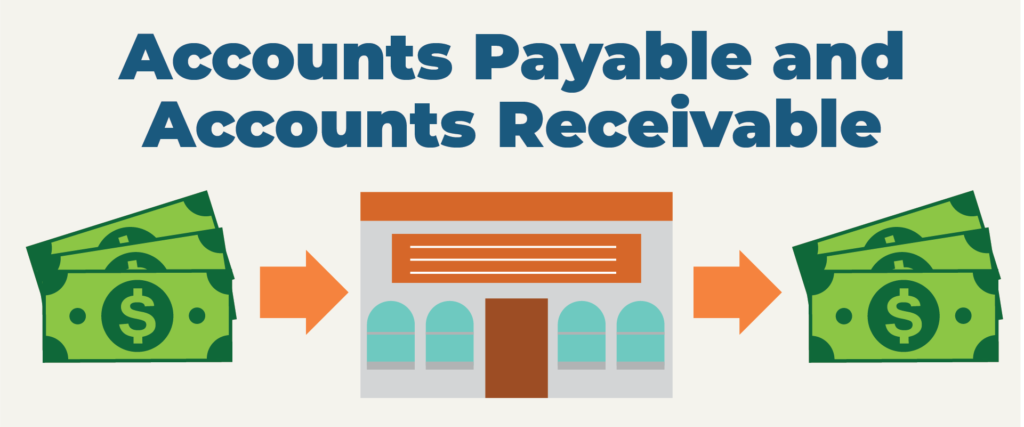
Effective accounts receivable (AR) and accounts payable (AP) management is crucial for maintaining a healthy cash flow and ensuring the financial stability of a business. Understanding the intricacies of invoice processing, payment cycles, credit management, and financial reconciliation can significantly improve efficiency and reduce risks. This guide explores the essentials of AR and AP, offering valuable insights for businesses looking to optimize their financial operations.
Understanding Accounts Receivable (AR)
What Is Accounts Receivable?
Accounts receivable refers to the outstanding payments that a company is owed by its customers for goods or services delivered on credit. These amounts are recorded as current assets on the balance sheet and represent a business’s right to receive cash within a specific period.
Importance of Managing Accounts Receivable
Efficient AR management ensures that a company maintains steady cash inflows, minimizes bad debt, and sustains strong relationships with customers. Poor AR management can lead to cash flow constraints, delayed growth, and increased financial risk.
Key Components of Accounts Receivable Management
- Credit Policies and Terms – Establishing clear credit policies helps businesses mitigate the risk of delayed payments. This includes setting credit limits and defining payment terms.
- Invoicing Practices – Timely and accurate invoicing is essential. Clear, detailed invoices with due dates and payment methods improve collection efficiency.
- Collections Process – Implementing a structured follow-up process ensures timely collections. Automated reminders and dunning letters can enhance efficiency.
- Cash Application – Accurately recording received payments ensures proper financial reconciliation and reduces discrepancies.
- Bad Debt Management – Identifying delinquent accounts early and having a strategy for write-offs or debt recovery improves financial control.
Best Practices for Accounts Receivable Optimization
- Offer multiple payment options to improve customer convenience.
- Implement automated invoicing and reminders to reduce manual effort.
- Conduct regular AR aging analysis to identify overdue accounts.
- Enforce strict credit approval processes to limit exposure to high-risk customers.
- Establish a dedicated AR team to handle collections efficiently.
Understanding Accounts Payable (AP)
What Is Accounts Payable?
Accounts payable represents the amounts a business owes to suppliers or vendors for goods and services received but not yet paid for. AP is recorded as a current liability on the balance sheet and directly impacts a company’s liquidity and reputation.
Importance of Managing Accounts Payable
Proper AP management ensures that a business maintains good supplier relationships, avoids late payment penalties, and optimizes cash flow. Delayed payments can lead to strained vendor relationships and reduced creditworthiness.
Key Components of Accounts Payable Management
- Invoice Processing – Timely receipt, verification, and approval of supplier invoices prevent payment delays and disputes.
- Payment Scheduling – Strategic payment planning maximizes cash flow while maintaining positive vendor relationships.
- Vendor Management – Building strong relationships with vendors can lead to better payment terms and discounts.
- Expense Tracking – Monitoring expenses helps in identifying cost-saving opportunities and ensuring accurate financial reporting.
- Fraud Prevention – Implementing internal controls reduces the risk of fraudulent transactions and unauthorized payments.
Best Practices for Accounts Payable Optimization
- Leverage AP automation tools to streamline invoice processing and approvals.
- Take advantage of early payment discounts offered by suppliers.
- Maintain a clear approval workflow to ensure proper authorization of payments.
- Reconcile vendor statements regularly to prevent discrepancies.
- Avoid late payments by setting up reminders and alerts for due invoices.
The Relationship Between AR and AP
A well-balanced accounts receivable and accounts payable process ensures financial stability. While AR represents incoming funds, AP represents outgoing payments. Effective management of both ensures that a company maintains sufficient liquidity and avoids cash flow disruptions.
Key Metrics for AR and AP Analysis
- Days Sales Outstanding (DSO) – Measures the average time taken to collect payments from customers.
- Days Payable Outstanding (DPO) – Calculates the average time taken to pay suppliers.
- Cash Conversion Cycle (CCC) – Analyzes how efficiently a company converts resources into cash flow.
- AR and AP Turnover Ratios – Evaluate the efficiency of collections and payments.
Technology’s Role in AR and AP Management
Automation and Artificial Intelligence in Financial Processes
The adoption of AI-driven automation in AR and AP has revolutionized financial management. Businesses can leverage software to streamline operations, reduce manual errors, and enhance financial visibility.
Popular AR and AP Software Solutions
- QuickBooks – Ideal for small and medium-sized businesses.
- SAP Ariba – Enterprise-grade AP automation solution.
- Bill.com – Simplifies invoice management and payment processing.
- NetSuite ERP – Comprehensive financial management platform.
- Xero – Cloud-based solution for AR and AP tracking.
Benefits of Automating AR and AP
- Faster invoicing and payment processing.
- Reduced errors and improved compliance.
- Enhanced financial reporting and analytics.
- Increased efficiency and reduced administrative workload.
Challenges in AR and AP Management
While technology has streamlined AR and AP processes, businesses still face challenges in:
- Late Payments – Customers delaying payments can strain cash flow.
- Disputes and Errors – Invoice discrepancies lead to collection and payment delays.
- Regulatory Compliance – Adhering to financial regulations requires meticulous documentation.
- Fraud Risks – Cybersecurity threats can compromise financial transactions.
Conclusion
Effective accounts receivable and accounts payable management is fundamental for business success. By leveraging automation, optimizing financial workflows, and adhering to best practices, companies can ensure strong cash flow, better vendor relationships, and improved profitability. Investing in robust financial processes and technology will enable businesses to scale efficiently and maintain long-term financial health.
Faq’s
-
What are the biggest challenges your company faces in managing accounts receivable and payables?
- Common challenges include delayed payments from customers, cash flow inconsistencies, manual data entry errors, difficulty reconciling invoices, and ensuring timely vendor payments.
-
How do you currently track and manage outstanding invoices and payments?
- Most businesses use accounting software like QuickBooks, SAP, NetSuite, or custom ERP systems. Some still rely on spreadsheets and manual tracking, though automation is increasing.
-
What payment terms do you typically offer to your customers, and how do you enforce them?
- Standard payment terms are Net 30, Net 60, or Net 90. Enforcement includes automated reminders, early payment discounts, late fees, and leveraging collection agencies when necessary.
-
How often do late payments or unpaid invoices impact your business’s cash flow?
- Many businesses face late payments regularly, affecting their liquidity. Around 30-50% of invoices may be paid late, requiring strict follow-ups and improved credit control policies.
-
What software or tools do you use for accounts receivable and payables management?
- Popular solutions include QuickBooks, Xero, FreshBooks, Bill.com, SAP, Oracle NetSuite, and Microsoft Dynamics. Many companies integrate their accounting tools with CRM and banking systems.
-
How do you ensure compliance with financial regulations and tax requirements related to AR/AP?
- Businesses follow GAAP or IFRS accounting standards, maintain accurate records, conduct regular audits, and comply with tax regulations through automated tax software or professional accountants.
-
What features would you like to see in an ideal accounts receivable and payables solution?
- Desired features include automated invoicing, AI-driven payment predictions, real-time reconciliation, fraud detection, seamless integrations with banks and ERPs, and improved reporting dashboards.
-
How do you handle disputes or discrepancies in invoices with your vendors or customers?
- Businesses address disputes by maintaining clear documentation, having a dedicated AR/AP team, setting up dispute resolution policies, and using invoice tracking tools to prevent errors.
-
How do you assess the creditworthiness of customers before extending payment terms?
- Methods include credit score checks, reviewing financial statements, customer references, historical payment behavior, and using credit monitoring services like Dun & Bradstreet or Experian.
-
What strategies have you implemented to streamline the accounts receivable and payables process?
- Automation, early payment incentives, outsourcing AR/AP functions, using cloud-based solutions, implementing strict credit policies, and regular financial reporting are common strategies.
